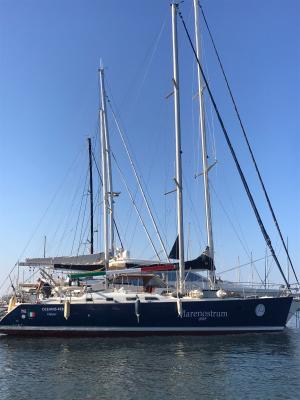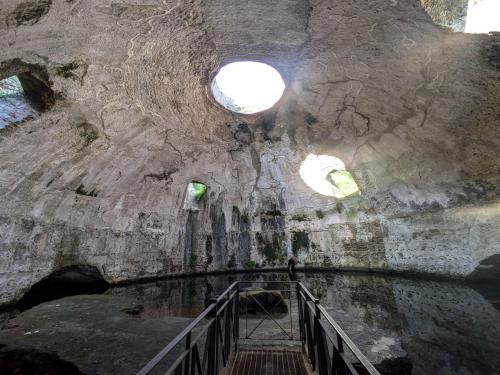Delinquents dive into new lives from confiscated people smugglers' yacht

NAPLES-During the Archeoclub press tour Friday a repurposed yacht formerly used for smuggling people was repurposed to help troubled youths learn a new vocation and provide them with a path away from a life of crime. The cruise took place in the Phlegraean Fields, a large volcanic area west of Naples that continues to show intense seismic activity.
The boat MareNostrum Dike which is used for the project was confiscated from the previous owner by the Public Prosecutors Office of Ragusa after the boat was seized for human smuggling and presented to Archeoclub D’Italia. The boat was used to smuggle refugees from Turkey to Italy. A boat that was built to seat 12 people comfortably was used to jam in over a hundred people, mostly from Afghanistan and Syria who were seeking asylum in Europe. The Guardia di Finanzia Air and Naval Unit intercepted and saved the passengers who were packed into horrible conditions and faced a constant risk of death at sea.
The MareNostrum Dike today is part of a project in collaboration with the Juvenile Justice Center of Campania, the Navy, the Military Corps of the Order of Malta and the various regional ARPAs. They are currently training juveniles from the Penal Area of Naples to dive and to clean sea beds and other underwater activities. This training provides the juveniles with another option to a life of crime and an opportunity to join a positive “gang” with a future. Umberto, a teenager in the program, spoke highly of his experience with the group.
Enrico Gallocchio, Archaeologist, Professor of Underwater Archaeology at the University of Ferrara, Head of the Submerged Park of Baia, gave a lecture on board the MareNostrum Dike describing the archaeological sites and coastal archaeological areas, from the Gaiola Park to the submerged Baia.
A UNESCO Heritage site, the only one of its kind, the underwater park has had its challenges with the environment. Professor Gallocchio explained that the mussels in the water would attach themselves to sculptures and eat the white marble. This was a problem for the site, since many of the marble statues were buried in the sand up to their necks. This encouraged the mussels to digest the heads of the statues rather than less vital pieces of the relics. The lecture was followed by a tour of the sites on the land including the Temple of Venus, the Baths of Baia, and the Temple of Diana.
At the Temple of Venus, the press was met by local geologist, Giuseppe Lungo, the former professor of Volcanology at the University of Naples Federico II and the former director of the Vesuvius Observatory, which oversees the site. He explained the geological history of the area over the last 2500 years and why the site was popular for Roman baths due to the thermal temperature of the water. The professor also discussed the risks of the environment to the local population living there today. Last May the site was struck by an earthquake with a 4.4 magnitude.
Seeing the conversion of criminally gotten gains, the boat, into a force for good to help troubled youth was inspiring, especially in the highly charged volcanic zone of the underwater UNESCO site. mlp

© COPYRIGHT ITALIAN INSIDER
UNAUTHORISED REPRODUCTION FORBIDDEN


